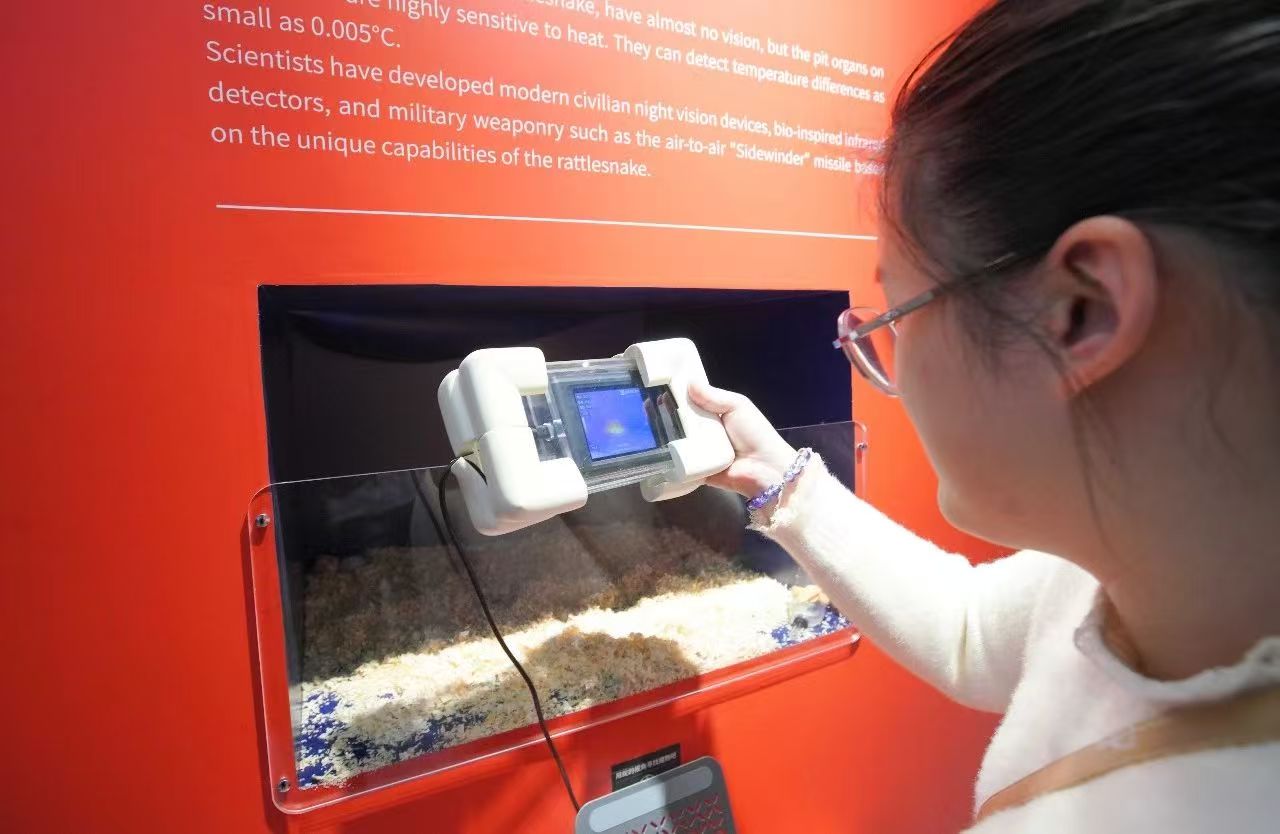Shanghai Natural History Museum holds special Year of the Snake exhibition

In celebration of Chinese New Year, the 2025 Year of the Snake zodiac exhibition Mystical Realms of Snakes opened on Jan 18 at the Shanghai Natural History Museum.
This exhibition showcases 80 select specimens from its collection, including ancient fossils and modern snake specimens. A third of all snake species in China are on display, along with species which have been recorded in Shanghai. It explores the evolutionary history and diversity of snakes.

The exhibition features four major parts: Mysterious Snake Traces, Winding World, Survival Wisdom, and Dancing with Snakes.
Through formats such as animations and 3D-printed models, the Winding World section teaches visitors about the origin of snakes, including how they lost their "feet", how they evolved and multiplied from the dinosaur era, and how their venom system developed. Visitors can also participate in various interactions and quizzes, guess how well snakes can adapt in different ecological environments, and gain an in-depth understanding of the diversity of snakes.
The Survival Wisdom area has an immersive interactive device known as Infrared Thermal Sensing Interactive Experience, allowing visitors to feel how sensitive snakes are to temperature changes when hunting. The Bionic Snake Interaction project reveals the unique charm of snake movement through the dynamic demonstration of bionic snakes.
The Dancing with Snakes area showcases the important role snakes have played in human history, and how they have inspired art and technology. The exhibition also showcases Xuhang straw weaving artworks, a national intangible cultural heritage item.
The current mainstream view is that snakes originated in the Cretaceous Period and evolved from lizards. They have adapted to various environments and climates by changing their body structures and lifestyles, and have existed for more than 100 million years, making them among the most successful reptiles, evolution-wise, on Earth.
As one of the twelve Chinese zodiac signs, the cultural connotation of the snake is reflected in all aspects of Chinese society. From myths and legends to philosophical concepts and artistic expressions, snakes have had a profound impact on traditional Chinese culture. Snakes are the subject of both admiration and scorn. On one hand, they symbolize wisdom and fertility, while on the other, they are incarnations of cunning, ingratitude, and evil.

If you go
Dates: Jan 18 to Apr 10
Venue: Atrium of B2, Shanghai Natural History Museum (Shanghai Science and Technology Museum Branch)
Location: No 510 West Beijing Road, Jing'an district
Hours: Tuesday to Sunday, 9 am to 5 pm (No entry after 4 pm)
Admission: Reservation and purchase of Shanghai Natural History Museum tickets are required.
Source: Shanghai Natural History Museum